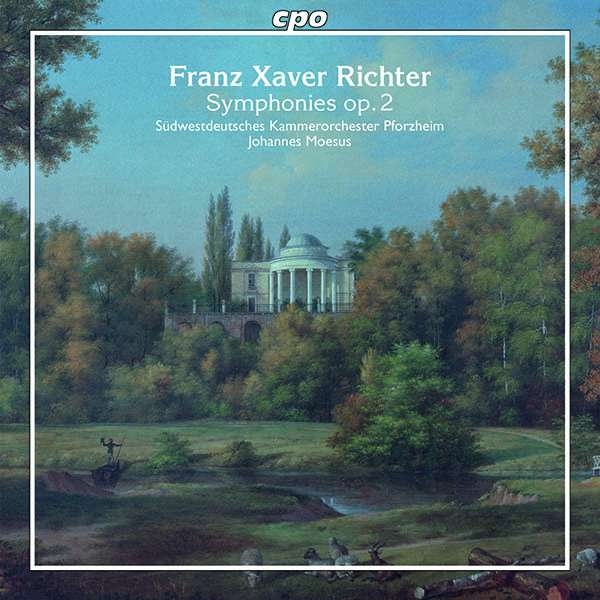Košík
Váš košík je momentálne prázdny.
Richter: Symphonies Op. 2
13,00 €
Formát:
CD
Dostupnosť:
na sklade / dostupné okamžite
Katalógové číslo:
777 991-2
EAN kód:
761203799121
Autori:
Franz Xaver Richter
Interpreti:
Johannes Moesus, Südwestdeutsches Kammerorchester Pforzheim
Vydavateľ:
CPO
Zoznam skladieb
Symphony in D major, Op. 2 No. 11 I. Allegro spiritoso
2 II. Andantino grazioso
3 III. Presto
Symphony in F major, Op. 2 No. 2
4 I. Adagio con brio
5 II. Andantino affettuoso
6 III. Presto
Symphony in C major, Op. 2 No. 3
7 I. Allegro con spirito
8 II. Andantino
9 III. Presto ma non tanto
Symphony in E flat major, Op. 2 No. 4
10 I. Allegro maestoso
11 II. Andante grazioso
12 III. Menuetto - Trio - Menuetto da capo
Symphony in G major, Op. 2 No. 5
13 I. Allegro con brio
14 II. Andantino
15 III. Vivace
Symphony in D major, Op. 2 No. 6
16 I. Allegro spiritoso
17 II. Andantino grazioso
18 III. Presto
Popis
Along with Johann Stamitz, Franz Xaver Richter is considered one of the founding figures of the Mannheim School and the famous court orchestra of Elector Carl Theodor von der Pfalz. Since 1747 he belonged to the famous court orchestra as a composer, violinist and bass player. His works combine stylistic features of the Baroque with gallant elements, and he was one of those masters of the Mannheim School who were very important for the beginnings of the pre-classical symphony. While Johann Stamitz, Ignaz Holzbauer, and Anton Fils, who took inspiration from Italy, shaped the new musical language of the so-called "Mannheim School," Richter's own comparatively conservative musical views probably prevented his promotion. in 1759, Johann Julius Hummel's publishing house in Amsterdam published the collection Six Simphonies Op. 2, dedicated to the Elector Carl Theodor. All six symphonies in the collection are in three movements, with which Richter adheres to the pattern of the operatic sinfonia. The only exception is the fourth work in the collection, at the end of which Richter places a minuet with trio instead of a presto. Despite some backward-looking tendencies in his compositions, the composer was by no means hostile to progress; on the contrary, he was the first "Mannheim composer" to publish string quartets. The recording of the symphonies was made according to the editions of the Forschungsstelle Südwestdeutsche Hofmusik of the Heidelberg Academy of Sciences.Prihlásenie
Newsletter



